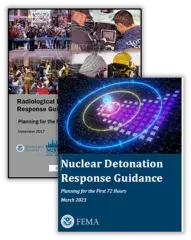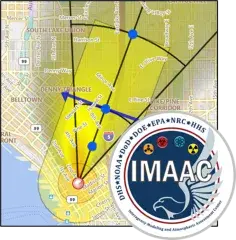Guest post from Eliot Calhoun, Acting Radiological/Nuclear Response and Recovery Program Manager at S&T’s National Urban Security Technology Laboratory.

The Radiological/Nuclear Response and Recovery (RNRR) Research and Development Project within the Science and Technology Directorate (S&T)’s National Urban Security Technology Laboratory (NUSTL) works with federal interagency partners to develop resources for state, local, tribal, and territorial (SLTT) jurisdictions to help them prepare for and recover from a radiological or nuclear incident. Although unlikely, radiological and nuclear emergencies can happen without warning and have the potential to result in severe public health and economic consequences. As part of National Preparedness Month, we’re sharing some of the products, tools, training, and guidance documents from the RNRR Portfolio that can help planners and responders prepare for radiological and nuclear response and recovery.
Emergency Response Guidance
-

- Planning Guidance for Response to a Nuclear Detonation: (PDF, 258 pgs., 16.09 MB) Guidance to support responders’ understanding of the hazards and what actions they should plan to take to protect themselves and the public after a nuclear detonation.
- 72-Hour Nuclear Response Guidance: (PDF, 105 pgs., 5.8 MB) Operationally focused guidance that outlines actions first responders and emergency managers should take during the first 72 hours after a nuclear detonation.
- Using Preventive Radiological/Nuclear (PRND) Equipment During Consequence Management: Job aids that describe procedures for how to effectively use first responder PRND equipment when conducting consequence management operations after a release of radioactive material.
Software-based Tools and Information
- The nucCPR (City Planner Resource): (PDF, 1 pg., 788 KB) An interactive web-based planning and exercise tool that provides realistic visualizations of nuclear detonation effects and impacts in 63 U.S. jurisdictions to help planners understand how an incident may unfold, its impacts, and possible response actions. The tool is hosted on the Department of Energy’s CMWeb portal. SLTT jurisdictions interested in access to this tool should contact Federal Emergency Management Agency (FEMA)’s Office of Emerging Threats.
- Nuclear Hazard Zone (NHZ) Tool: An operational tool used immediately after a nuclear detonation to produce hazard zone predictions that help determine where critical protective actions are needed. SLTT jurisdictions interested in access to the NHZ tool should contact FEMA’s Interagency Modeling and Atmospheric Assessment Center (IMAAC).
- Radiological Recovery Logistics Tool: A tool that supports planners in identifying the appropriate commercial and public works equipment for use during response and recovery from a radiological incident to mitigate, remove, and contain radiological contamination.
- Rad Decon Tool: An application available via RadResponder that serves as a decision aid in prioritizing decontamination strategies after large scale radiation incidents.
Training
- RDD Train the Planner: Course that teaches planners the main aspects of the RDD Response Guidance to support their development of jurisdiction-specific plans that cover public messaging, using RadResponder, and coordinating a multi-agency response.
- Radiological Operations Support Specialist (ROSS): A FEMA-managed program that trains a cadre of radiation professionals to integrate seamlessly into the incident command system. RNRR also developed a series of job aids and training course materials to support completion of the ROSS Position Task Book (PDF, 22 pgs., 499 KB).
- The ROSS Toolkit: Available via RadResponder, reference materials, tools, and job aids organized for ROSS, with the goal of improving access to information that they may need to prepare for and/or respond to a radiological emergency and fulfill their role in data analysis and decision support.
Enhancements to Existing Planning and Response Software
- Resource Library in CBRNResponder: A resource library providing CBRNResponder users access to key radiological/nuclear response planning guidance, technical guidance, and public information officer tools and resources.
-

- Federal Radiological Monitoring and Assessment Center (FRMAC): A new, RNNR-developed request for information web portal in the DOE’s COSMOS software tool that simplifies SLTT responders’ access to FRMAC technical expertise. RNRR also developed training for SLTT radiation technical experts on advanced TurboFRMAC concepts, and updated features to help inform critical decisions regarding radiation impacts.
RNRR experts work tirelessly every month of the year, expecting the unexpected and thinking through the unthinkable. Though radiological and nuclear events have a low probability, they also have extremely high potential consequences, making this type of preparedness vitally important. The items listed here are just a glimpse of the impact this work has had on our nation’s preparedness. If you’re interested in learning more about RNRR, check out Season 2 Episode 5 of the Technologically Speaking podcast, “NUSTL’s Bread and Butter.”
